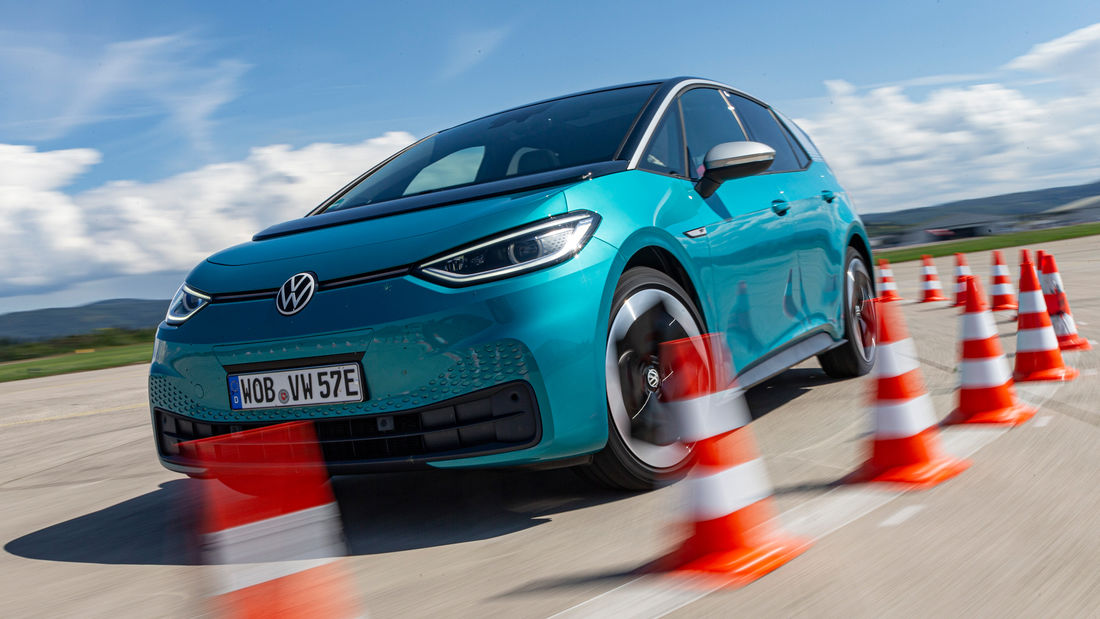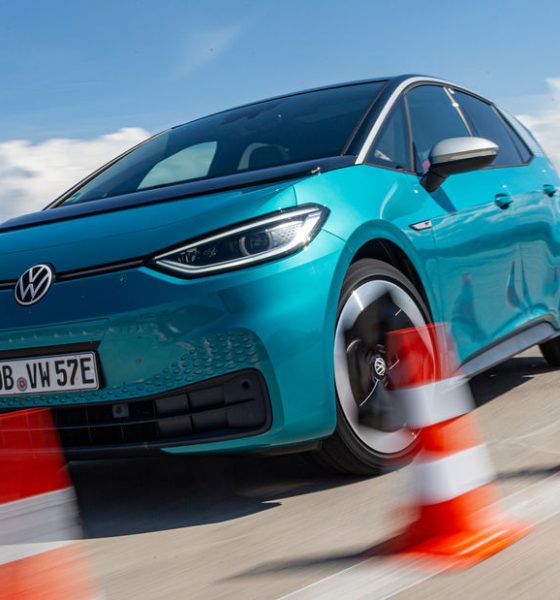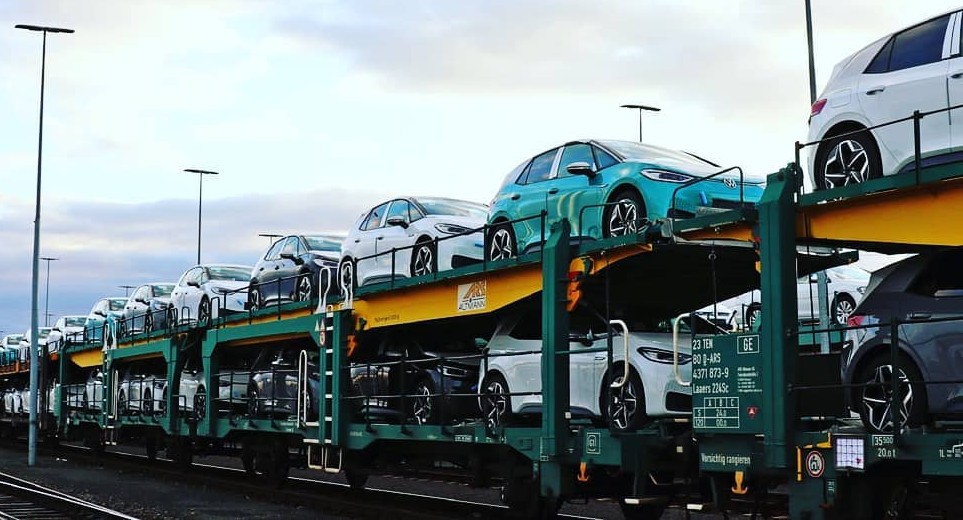

News
Volkswagen ID.3 gets sharp criticism on build quality, ‘unfinished’ electronics from German auto magazine
During his brief test drive of the Volkswagen ID.3, Tesla CEO Elon Musk remarked that the all-electric hatchback’s steering was “pretty good” for a non-sports car. These observations were pretty much confirmed in a recent review of the ID.3, but based on the findings of the German motoring agency that conducted the test, Volkswagen’s first EV from its MEB platform still has a lot of things that it needs to improve to justify its price.
German auto magazine auto motor und sport was able to conduct a review of the Volkswagen ID.3, covering the vehicle’s driving dynamics, overall build quality, tech, and range. On all but one of these segments, the ID.3 exhibited some issues, leading the magazine to extend some sharp critiques on the vehicle. According to auto motor und sport’s reviewers, the ID.3 has big areas of improvement in build quality, tech, and range.
The magazine noted that Volkswagen has pretty much established a reputation for making cars with great build quality. This seemed to be absent on the ID.3, as reviewers noticed that their review unit had panel gap issues and inconsistent alignments. Hard plastics were also abounding, which made the interior sensitive to dirt.

Unfortunately for the ID.3, its build quality issues were eclipsed by problems with its tech, which the magazine’s reviewers described as “unfinished.” The magazine mentioned a slow infotainment system, a faulty navigation system, and inconsistent voice control, as examples of the ID.3’s tech problems.
“The electronics show clear weaknesses in the near-series test car. The infotainment system only starts up slowly, the navigation system often remains disoriented for several hundred meters. The system does not call up online services at all. The ten-inch monitor is relatively far away from the driver and is therefore somewhat difficult to operate. Switching to voice control is not much fun because the system does not work properly and quickly,” auto motor und sport wrote.
The magazine also mentioned that while the ID.3 was able to manage a range of 359 kilometers (223 miles) during their test, the results were only possible when the team drove the car very defensively. Once the test included motorway and city driving, the ID.3’s efficiency fell, resulting in the car being empty after just 260 kilometers (161 miles).
Not everything about the ID.3 was problematic, however. Just as stated by Elon Musk during his test drive of the vehicle, the ID.3 actually drives pretty well despite its lack of power compared to cars like the Model 3 Performance. The motoring magazine stated that the ID.3 had a perfectly balanced driving behavior, and its brakes performed really well. Unfortunately, even these do not justify the price of the ID.3 test unit, which Volkswagen sets at about 49,000 euros ($57,800) before incentives.
“VW is calling for almost 49,000 euros for the ID.3 test car, before deducting the environmental bonus. Measured against the quality construction (issues) that the testers from auto motor und sport found, it should be half at best. VW has to make improvements here as soon as possible. Unlike their competitor Tesla, the Wolfsburg-based company certainly doesn’t have a ‘beginner’s’ bonus,” the German magazine noted.

Elon Musk
Elon Musk and Tesla AI Director share insights after empty driver seat Robotaxi rides
The executives’ unoccupied tests hint at the rapid progress of Tesla’s unsupervised Robotaxi efforts.

Tesla CEO Elon Musk and AI Director Ashok Elluswamy celebrated Christmas Eve by sharing personal experiences with Robotaxi vehicles that had no safety monitor or occupant in the driver’s seat. Musk described the system’s “perfect driving” around Austin, while Elluswamy posted video from the back seat, calling it “an amazing experience.”
The executives’ unoccupied tests hint at the rapid progress of Tesla’s unsupervised Robotaxi efforts.
Elon and Ashok’s firsthand Robotaxi insights
Prior to Musk and the Tesla AI Director’s posts, sightings of unmanned Teslas navigating public roads were widely shared on social media. One such vehicle was spotted in Austin, Texas, which Elon Musk acknowleged by stating that “Testing is underway with no occupants in the car.”
Based on his Christmas Eve post, Musk seemed to have tested an unmanned Tesla himself. “A Tesla with no safety monitor in the car and me sitting in the passenger seat took me all around Austin on Sunday with perfect driving,” Musk wrote in his post.
Elluswamy responded with a 2-minute video showing himself in the rear of an unmanned Tesla. The video featured the vehicle’s empty front seats, as well as its smooth handling through real-world traffic. He captioned his video with the words, “It’s an amazing experience!”
Towards Unsupervised operations
During an xAI Hackathon earlier this month, Elon Musk mentioned that Tesla owed be removing Safety Monitors from its Robotaxis in Austin in just three weeks. “Unsupervised is pretty much solved at this point. So there will be Tesla Robotaxis operating in Austin with no one in them. Not even anyone in the passenger seat in about three weeks,” he said. Musk echoed similar estimates at the 2025 Annual Shareholder Meeting and the Q3 2025 earnings call.
Considering the insights that were posted Musk and Elluswamy, it does appear that Tesla is working hard towards operating its Robotaxis with no safety monitors. This is quite impressive considering that the service was launched just earlier this year.
Elon Musk
Starlink passes 9 million active customers just weeks after hitting 8 million
The milestone highlights the accelerating growth of Starlink, which has now been adding over 20,000 new users per day.

SpaceX’s Starlink satellite internet service has continued its rapid global expansion, surpassing 9 million active customers just weeks after crossing the 8 million mark.
The milestone highlights the accelerating growth of Starlink, which has now been adding over 20,000 new users per day.
9 million customers
In a post on X, SpaceX stated that Starlink now serves over 9 million active users across 155 countries, territories, and markets. The company reached 8 million customers in early November, meaning it added roughly 1 million subscribers in under seven weeks, or about 21,275 new users on average per day.
“Starlink is connecting more than 9M active customers with high-speed internet across 155 countries, territories, and many other markets,” Starlink wrote in a post on its official X account. SpaceX President Gwynne Shotwell also celebrated the milestone on X. “A huge thank you to all of our customers and congrats to the Starlink team for such an incredible product,” she wrote.
That growth rate reflects both rising demand for broadband in underserved regions and Starlink’s expanding satellite constellation, which now includes more than 9,000 low-Earth-orbit satellites designed to deliver high-speed, low-latency internet worldwide.
Starlink’s momentum
Starlink’s momentum has been building up. SpaceX reported 4.6 million Starlink customers in December 2024, followed by 7 million by August 2025, and 8 million customers in November. Independent data also suggests Starlink usage is rising sharply, with Cloudflare reporting that global web traffic from Starlink users more than doubled in 2025, as noted in an Insider report.
Starlink’s momentum is increasingly tied to SpaceX’s broader financial outlook. Elon Musk has said the satellite network is “by far” the company’s largest revenue driver, and reports suggest SpaceX may be positioning itself for an initial public offering as soon as next year, with valuations estimated as high as $1.5 trillion. Musk has also suggested in the past that Starlink could have its own IPO in the future.
News
NVIDIA Director of Robotics: Tesla FSD v14 is the first AI to pass the “Physical Turing Test”
After testing FSD v14, Fan stated that his experience with FSD felt magical at first, but it soon started to feel like a routine.

NVIDIA Director of Robotics Jim Fan has praised Tesla’s Full Self-Driving (Supervised) v14 as the first AI to pass what he described as a “Physical Turing Test.”
After testing FSD v14, Fan stated that his experience with FSD felt magical at first, but it soon started to feel like a routine. And just like smartphones today, removing it now would “actively hurt.”
Jim Fan’s hands-on FSD v14 impressions
Fan, a leading researcher in embodied AI who is currently solving Physical AI at NVIDIA and spearheading the company’s Project GR00T initiative, noted that he actually was late to the Tesla game. He was, however, one of the first to try out FSD v14.
“I was very late to own a Tesla but among the earliest to try out FSD v14. It’s perhaps the first time I experience an AI that passes the Physical Turing Test: after a long day at work, you press a button, lay back, and couldn’t tell if a neural net or a human drove you home,” Fan wrote in a post on X.
Fan added: “Despite knowing exactly how robot learning works, I still find it magical watching the steering wheel turn by itself. First it feels surreal, next it becomes routine. Then, like the smartphone, taking it away actively hurts. This is how humanity gets rewired and glued to god-like technologies.”
The Physical Turing Test
The original Turing Test was conceived by Alan Turing in 1950, and it was aimed at determining if a machine could exhibit behavior that is equivalent to or indistinguishable from a human. By focusing on text-based conversations, the original Turing Test set a high bar for natural language processing and machine learning.
This test has been passed by today’s large language models. However, the capability to converse in a humanlike manner is a completely different challenge from performing real-world problem-solving or physical interactions. Thus, Fan introduced the Physical Turing Test, which challenges AI systems to demonstrate intelligence through physical actions.
Based on Fan’s comments, Tesla has demonstrated these intelligent physical actions with FSD v14. Elon Musk agreed with the NVIDIA executive, stating in a post on X that with FSD v14, “you can sense the sentience maturing.” Musk also praised Tesla AI, calling it the best “real-world AI” today.








